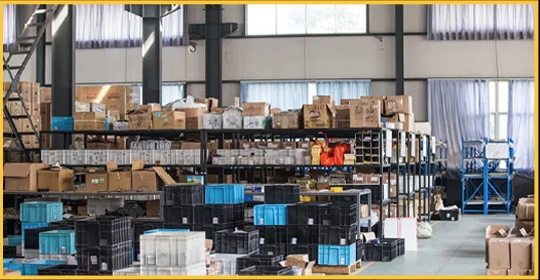
-
 Afrikaans
Afrikaans -
 Albanian
Albanian -
 Amharic
Amharic -
 Arabic
Arabic -
 Armenian
Armenian -
 Azerbaijani
Azerbaijani -
 Basque
Basque -
 Belarusian
Belarusian -
 Bengali
Bengali -
 Bosnian
Bosnian -
 Bulgarian
Bulgarian -
 Catalan
Catalan -
 Cebuano
Cebuano -
 Corsican
Corsican -
 Croatian
Croatian -
 Czech
Czech -
 Danish
Danish -
 Dutch
Dutch -
 English
English -
 Esperanto
Esperanto -
 Estonian
Estonian -
 Finnish
Finnish -
 French
French -
 Frisian
Frisian -
 Galician
Galician -
 Georgian
Georgian -
 German
German -
 Greek
Greek -
 Gujarati
Gujarati -
 Haitian Creole
Haitian Creole -
 hausa
hausa -
 hawaiian
hawaiian -
 Hebrew
Hebrew -
 Hindi
Hindi -
 Miao
Miao -
 Hungarian
Hungarian -
 Icelandic
Icelandic -
 igbo
igbo -
 Indonesian
Indonesian -
 irish
irish -
 Italian
Italian -
 Japanese
Japanese -
 Javanese
Javanese -
 Kannada
Kannada -
 kazakh
kazakh -
 Khmer
Khmer -
 Rwandese
Rwandese -
 Korean
Korean -
 Kurdish
Kurdish -
 Kyrgyz
Kyrgyz -
 Lao
Lao -
 Latin
Latin -
 Latvian
Latvian -
 Lithuanian
Lithuanian -
 Luxembourgish
Luxembourgish -
 Macedonian
Macedonian -
 Malgashi
Malgashi -
 Malay
Malay -
 Malayalam
Malayalam -
 Maltese
Maltese -
 Maori
Maori -
 Marathi
Marathi -
 Mongolian
Mongolian -
 Myanmar
Myanmar -
 Nepali
Nepali -
 Norwegian
Norwegian -
 Norwegian
Norwegian -
 Occitan
Occitan -
 Pashto
Pashto -
 Persian
Persian -
 Polish
Polish -
 Portuguese
Portuguese -
 Punjabi
Punjabi -
 Romanian
Romanian -
 Russian
Russian -
 Samoan
Samoan -
 Scottish Gaelic
Scottish Gaelic -
 Serbian
Serbian -
 Sesotho
Sesotho -
 Shona
Shona -
 Sindhi
Sindhi -
 Sinhala
Sinhala -
 Slovak
Slovak -
 Slovenian
Slovenian -
 Somali
Somali -
 Spanish
Spanish -
 Sundanese
Sundanese -
 Swahili
Swahili -
 Swedish
Swedish -
 Tagalog
Tagalog -
 Tajik
Tajik -
 Tamil
Tamil -
 Tatar
Tatar -
 Telugu
Telugu -
 Thai
Thai -
 Turkish
Turkish -
 Turkmen
Turkmen -
 Ukrainian
Ukrainian -
 Urdu
Urdu -
 Uighur
Uighur -
 Uzbek
Uzbek -
 Vietnamese
Vietnamese -
 Welsh
Welsh -
 Bantu
Bantu -
 Yiddish
Yiddish -
 Yoruba
Yoruba -
 Zulu
Zulu


Oct . 31, 2024 20:39 Back to list
Exploring the Differences Between Push Rods and Pull Rods in Engineering Applications
Push Rod and Pull Rod A Study in Mechanical Design
In the realm of mechanical engineering, the terms push rod and pull rod represent essential components that play a critical role in various applications, particularly in the automotive and aerospace industries. These rods are used in systems that require the transmission of force, enabling movement and control in complex machinery.
Understanding Push Rods and Pull Rods
A push rod, as the name suggests, is designed to transmit force in a pushing motion. Typically made of robust materials like steel, aluminum, or high-strength composites, push rods are often found in internal combustion engines. They connect the camshaft to the engine’s valves, facilitating the opening and closing of the valves as the engine operates. This function is vital for maintaining the engine's efficiency and performance. The push rod’s ability to withstand high pressures and temperatures makes it a fundamental component in high-performance vehicles.
Conversely, a pull rod operates in a pulling motion. Commonly used in suspension systems, particularly in racing cars and advanced aircraft, pull rods connect the suspension arms to the chassis. When the suspension compresses, the pull rod transfers this force to the chassis, allowing the vehicle to maintain stability and control over varying terrains. This design not only contributes to improved aerodynamics but also enhances the overall agility of the vehicle.
push rod pull rod

Applications and Innovations
Both push rods and pull rods have seen significant innovation over the years. The evolution of materials and manufacturing techniques, including the advent of carbon fiber and 3D printing, have led to lighter and stronger rods. These advancements have made it possible to design more efficient engines and sophisticated suspension systems, contributing to the overall performance of modern vehicles.
In the aerospace sector, where weight and strength are crucial, pull rods are particularly vital. They are engineered carefully to meet stringent safety standards while ensuring maximum performance. Companies are continually innovating to integrate new technologies, such as sensors and smart materials, into these rods to monitor stress and provide real-time data, thus enhancing safety and efficiency.
Conclusion
Push rods and pull rods are more than just simple mechanical components; they are key players in the intricate dance of engineering. Their design and functionality impact the performance and safety of machines that drive our modern world. As technology progresses, the significance of these components continues to grow, paving the way for new innovations that will shape the future of mechanical design and engineering. Understanding their roles not only helps engineers create better systems but also fosters a deeper appreciation for the complexities of modern machinery.
Latest news
What Are Construction Tools and How Are They Used?
NewsJul.11,2025
Professional-Grade Duct Rodding Tools for Superior Cable Installation
NewsJul.11,2025
Enhancing Safety and Efficiency with Modern Hot Stick Solutions
NewsJul.11,2025
Empowering Cable Installation with Advanced Rodder Solutions
NewsJul.11,2025
Elevate Your Cable Installation Projects with Cable Pulling Tools
NewsJul.11,2025
Efficient Cable Handling Solutions: Cable Rollers for Sale
NewsJul.11,2025











